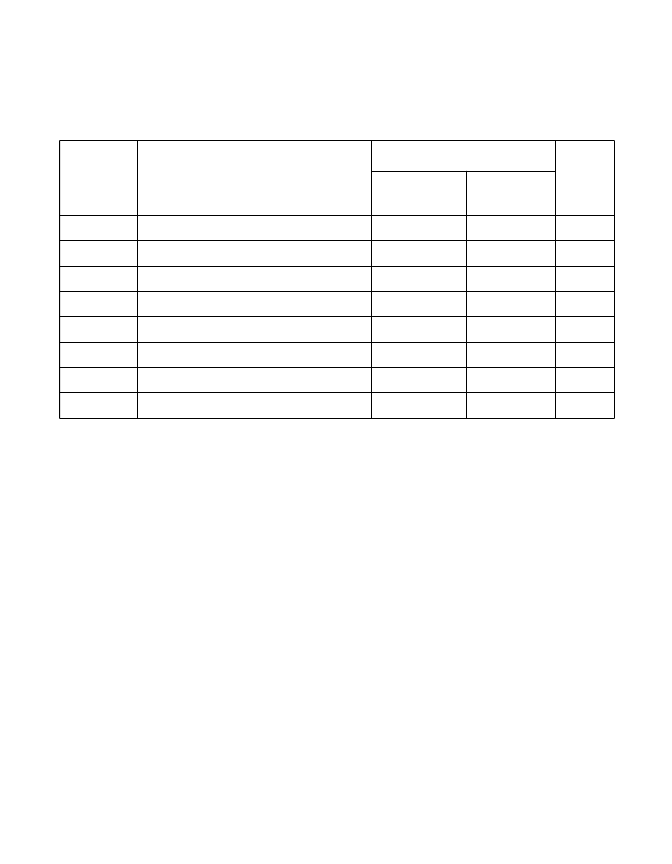- 您現(xiàn)在的位置:買賣IC網(wǎng) > PDF目錄362398 > ARM7TDMI-S ARM7TDMI-S Microprocessor Core preliminary technical manual 5/00 PDF資料下載
參數(shù)資料
| 型號: | ARM7TDMI-S |
| 英文描述: | ARM7TDMI-S Microprocessor Core preliminary technical manual 5/00 |
| 中文描述: | 的ARM7TDMI - S微處理器核的初步技術(shù)手冊5 / 00 |
| 文件頁數(shù): | 62/184頁 |
| 文件大?。?/td> | 1147K |
| 代理商: | ARM7TDMI-S |
第1頁第2頁第3頁第4頁第5頁第6頁第7頁第8頁第9頁第10頁第11頁第12頁第13頁第14頁第15頁第16頁第17頁第18頁第19頁第20頁第21頁第22頁第23頁第24頁第25頁第26頁第27頁第28頁第29頁第30頁第31頁第32頁第33頁第34頁第35頁第36頁第37頁第38頁第39頁第40頁第41頁第42頁第43頁第44頁第45頁第46頁第47頁第48頁第49頁第50頁第51頁第52頁第53頁第54頁第55頁第56頁第57頁第58頁第59頁第60頁第61頁當(dāng)前第62頁第63頁第64頁第65頁第66頁第67頁第68頁第69頁第70頁第71頁第72頁第73頁第74頁第75頁第76頁第77頁第78頁第79頁第80頁第81頁第82頁第83頁第84頁第85頁第86頁第87頁第88頁第89頁第90頁第91頁第92頁第93頁第94頁第95頁第96頁第97頁第98頁第99頁第100頁第101頁第102頁第103頁第104頁第105頁第106頁第107頁第108頁第109頁第110頁第111頁第112頁第113頁第114頁第115頁第116頁第117頁第118頁第119頁第120頁第121頁第122頁第123頁第124頁第125頁第126頁第127頁第128頁第129頁第130頁第131頁第132頁第133頁第134頁第135頁第136頁第137頁第138頁第139頁第140頁第141頁第142頁第143頁第144頁第145頁第146頁第147頁第148頁第149頁第150頁第151頁第152頁第153頁第154頁第155頁第156頁第157頁第158頁第159頁第160頁第161頁第162頁第163頁第164頁第165頁第166頁第167頁第168頁第169頁第170頁第171頁第172頁第173頁第174頁第175頁第176頁第177頁第178頁第179頁第180頁第181頁第182頁第183頁第184頁

3-12
Programmer’s Model
Rev. A
Copyright 2000 by LSI Logic Corporation. All rights reserved.
the exception handler. More details on actions taken on entering and
exiting an exception are provided in the following subsections.
3.6.1 Entering an Exception
When handling an exception, the ARM7TDMI-S core:
1.
Preserves the address of the next instruction in the appropriate Link
register.
If the exception has been entered from ARM state, then the address
of the next instruction is copied into the Link register (current PC +
4 or PC + 8, depending on the exception. If the exception has been
entered from Thumb state, then the value the ARM7TDMI-S core
writes into the Link register is the current PC offset by a value that
causes the program to resume from the correct place on return from
the exception. Thus the exception handler need not determine the
state when entering an exception. For example, in the case of a
Software Interrupt (
SWI
),
MOVS PC, R14_svc
always returns to the
Table 3.2
Exception Entry/Exit
Return Instruction
Previous State
Notes
ARM
R14_x
Thumb
R14_x
BL
MOV PC, R14
PC + 4
PC + 2
1
SWI
MOVS PC, R14_svc
PC + 4
PC + 2
1
UDEF
MOVS PC, R14_und
PC + 4
PC + 2
1
FIQ
SUBS PC, R14_fiq, #4
PC + 4
PC + 4
2
IRQ
SUBS PC, R14_irq, #4
PC + 4
PC + 4
2
PABT
SUBS PC, R14_abt, #4
PC + 4
PC + 4
1
DABT
SUBS PC, R14_abt, #8
PC + 8
PC + 8
3
RESET
NA
–
–
4
1. Where PC is the address of the BL/SWI/Undefined Instruction fetch that had the prefetch abort.
2. Where PC is the address of the instruction that did not get executed because the FIQ or IRQ took
priority.
3. Where PC is the address of the Load or Store instruction that generated the data abort.
4. The value saved in R14_svc upon reset is unpredictable.
相關(guān)PDF資料 |
PDF描述 |
|---|---|
| ARM946E-S | ARM946E-S Microprocessor Core with Cache technical manual 6/01 |
| ARM966E-S | ARM966E-S Microprocessor Core preliminary technical manual 6/01 |
| ARS2569 | Amplifier. Other |
| AR2569 | Amplifier. Other |
| ARS4019 | Amplifier. Other |
相關(guān)代理商/技術(shù)參數(shù) |
參數(shù)描述 |
|---|---|
| ARM920T | 制造商:未知廠家 制造商全稱:未知廠家 功能描述:System-on-Chip Platform OS Processor |
| ARM940T | 制造商:未知廠家 制造商全稱:未知廠家 功能描述:TECHNICAL REFERENCE MANUAL |
| ARM946E-S | 制造商:未知廠家 制造商全稱:未知廠家 功能描述:ARM946E-S Microprocessor Core with Cache technical manual 6/01 |
| ARM966E-S | 制造商:未知廠家 制造商全稱:未知廠家 功能描述:ARM966E-S Microprocessor Core preliminary technical manual 6/01 |
發(fā)布緊急采購,3分鐘左右您將得到回復(fù)。